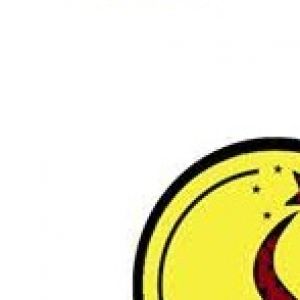دوري أبطال أفريقياPosted by Greencore on July 8th, 2019 Bienvenue sur le wydadplus. Nous offrons le meilleur News du WAC et les dernières Actualité News pour Athletic Club, ligue des champions, et WAC Casablanca. Investigating and coordinating examples of mortar are the initial phases in fixing splits in workmanship. Despite the fact that this progression is regularly ignored, it is less than ideal. When fixing stone work breaks, it is significant that the new mortar cling to the old mortar existing in the mortar joints. At the point when the new mortar neglects to bond, it will in general disintegrate or pop free and drop out of the divider. In such, the fixes don't last, and can make extra harm the current blocks. Harm to the blocks happens when the substitution mortar is more earnestly than the first mortar and the blocks. As it pops free, it can spall or chip off the essences of blocks. This can turn into a genuine issue if the block are ceased or memorable and old fashioned blocks, and you can't find substitution blocks. At the point when the new mortar is milder than the first concrete, it will in general disintegrate under the weight of the block divider. This could result in the entire divider tumbling down contingent upon the region fixed. Broken or falling passages and breaks above carport entryway openings are the in all likelihood territories for this to occur. What's more, we have all observed the most ordinarily perceived type of bungled mortar fixes. You know, the goliath lightning jolt running down the side of block dividers. This happens when the shade of substitution mortar doesn't coordinate the current mortar, and causes what I call the lightning jolt impact. These issues are stayed away from effectively by appropriately coordinating the mortar. The devastating weight of concrete and the equation of mortar sythesis decide how the mortar bonds and performs in the middle of the blocks, and the arrangement impacts the shade of mortar and how colors respond in the concrete. Therefore, coordinating the arrangement and squashing weight of the mortar will settle the initial two issues and make it simpler to get an ideal shading match for the substitution mortar. A typical confusion about coordinating mortar shading is that it is impossible. This is on the grounds that the bricklayer doesn't have an inkling how or is reluctant to take the time required for testing tests and do it right. Or then again more awful, they may reveal to you how they can coordinate it on location and demonstrate to you how close they can coordinate the shading by changing colors and parts of premixed mortar packs. At the point when premixed type n packs of brick work bond are re-proportioned by blending limited quantities of various hues from each sack, the equation that makes them a specific mortar type and squashing weight are changed, and they can have no sensible thought of the new organization made on the grounds that the materials inside the packs or cans separate by weight during vehicle and vibration. Since they are speculating the piece now, you are probably going to have one of the initial two issues of the mortar not holding since it is excessively hard or delicate. Examination of mortar sythesis is the best way to guarantee the nature of brick work fixes and that fix mortars last. Mortar examination of solidified bond mortars for the most part takes around half a month to get results over from the testing lab depending of how bustling they are at the time, and some fix organizations have versatile testing gear that they expedite site to decide the mortar type and recipe. Lab testing of mortar for coordinating is commonly progressively dependable and exact for shading matches since they have all the time expected to coordinate the shading, and on location coordinating is restricted to the time took into consideration finishing fixes less the arrangement, establishment, and tidy up. Like I stated, mortar examination can take about seven days plus or minus a couple of days. Some mortar testing labs take installments on the web, yet most require a check/cash request sent with tests for testing. The measure of mortar does make a difference, and where the mortar originates from will be significant. Mortar examination labs need enough mortar for the majority of the tests mentioned. For the most part an a large portion of a cup is all that anyone could need to finish all tests and rehash a few examinations as required for precision. Shading matches require surface mortar to get the most precise outcomes. Delicate mortars will in general disintegrate. This is OK. There are commonly some bigger pieces to test compressive quality and after that the remainder of the testing is performed with squashed mortar in any case. Notable mortars are the most widely recognized to disintegrate. When gathering mortar tests for investigation, think about where they are being utilized. Inside examples are commonly better for testing, yet not generally. On the off chance that you have inquiries concerning this, you can contact the testing lab and counsel their prompt. Notable mortar arrangement investigation will be the equivalent, however in some cases various mortars were utilized for bedding mortar to lay the blocks or stone than were utilized to point the mortar joints. You may need to test both the bedding mortar and the pointing mortar. When you get the mortar testing report and results back, you can request or make stone work pointing mortar for fold pointing the breaks, and start reestablishing the workmanship. Throughout the years, I have worked with numerous workmanship fix ventures from private fixes and memorable mortar fix, and have required mortar investigation and coordinating administrations for each task. I have discovered some valuable sites to support you. Visit this website==>>https://wydadplus.com Article Source: https://EzineArticles.com/master/James_Nech/90539 Article Source: http://EzineArticles.com/8123248 Like it? Share it!More by this author |


